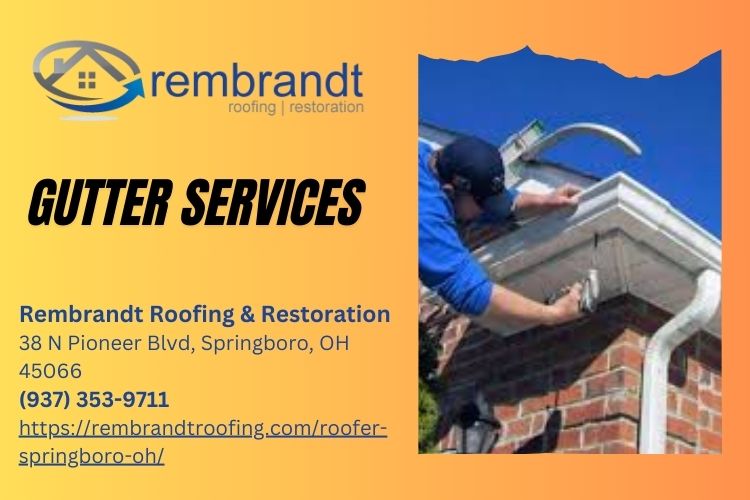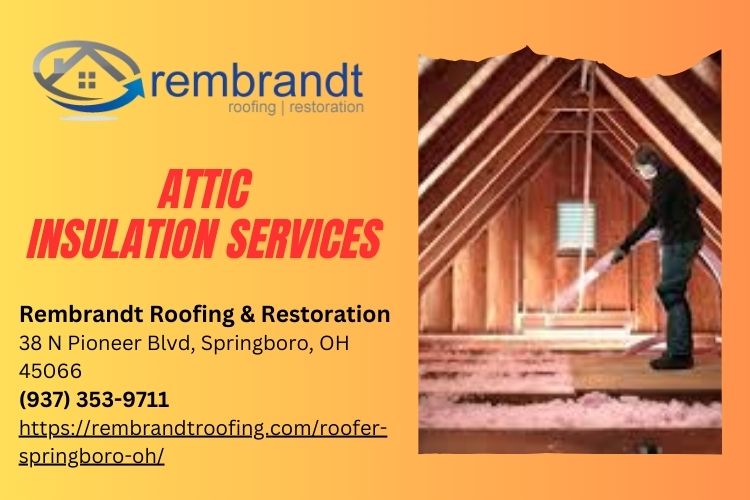Introduction
Flat roofs have become increasingly popular in both residential and commercial buildings. With their sleek design and practicality, they offer a unique alternative to traditional sloped roofs. However, potential homeowners or business owners often have questions about the functionality, maintenance, and repair of flat roofs. This article aims to provide a comprehensive guide on everything you need to know about flat roofs, drawing insights from the experts at Rembrandt Roofing & Restoration.
Everything You Need to Know About Flat Roofs: Insights from Rembrandt Roofing & Restoration
Flat roofs are characterized by their minimal slope, which creates a level surface that can be utilized for various purposes. Whether you're considering a new roofing installation or looking for information about roofing repairs, understanding the intricacies of flat roofs is essential.
What Are Flat Roofs?
Flat roofs are horizontal or nearly horizontal structures that serve as the top covering of a building. They are typically found in urban environments and commercial properties because they maximize available space and allow for easy access for maintenance and inspections.
Types of Flat Roofs
There are several types of flat roofing systems, including:

- Built-Up Roofing (BUR): This traditional method consists of multiple layers of asphalt and gravel. Modified Bitumen: A more modern approach, modified bitumen uses polymer-modified asphalt for added elasticity and durability. Single-Ply Membrane: These sheets (like TPO or PVC) are installed as a single layer over insulation boards. " width="560" height="315" frameborder="0" allowfullscreen>
Advantages of Flat Roofs
Cost-Effective: Flat roofs usually require less material than pitched roofs, making them more affordable.
Usable Space: They provide additional space for HVAC units or recreational areas like rooftop gardens.
Easy Maintenance: Their accessibility simplifies roof inspections and regular maintenance tasks.
Energy Efficiency: With proper insulation, flat roofs can help improve energy efficiency in buildings.
Common Misconceptions about Flat Roofs
Many people have misconceptions about flat roofs that can deter them from considering this option:

They Leak More Than Sloped Roofs: While flat roofs may be more prone to leaks if not properly maintained, quality materials and expert installation (such as those provided by Rembrandt Roofing & Restoration) can significantly reduce this risk.
They're Less Durable: With advancements in roofing technology, many flat roofing materials offer enhanced durability compared to traditional options.
They Have Limited Lifespan: Depending on the material used, some flat roofs can last up to 30 years with proper care.
The Role of Rembrandt Roofing & Restoration in Flat Roof Installations
Rembrandt Roofing & Restoration specializes in delivering high-quality roofing services tailored to meet your specific needs. From roof installations to inspections and repairs, their team of skilled roofing contractors has extensive experience working with various types of flat roofing systems.
Choosing the Right Materials
When it comes to choosing materials for your flat roof installation or renovation project, it's crucial to consult with professionals who understand local climate conditions and building codes. Rembrandt Roofing & Restoration can help you select the best materials that suit your needs while ensuring longevity and performance.
Flat Roof Installation Process
Initial Consultation and Assessment
Before any work begins, an expert will conduct a thorough inspection of your existing structure or site conditions to determine the best course of action regarding your new roof installation.
Material Selection
As mentioned earlier, selecting appropriate materials is vital for your roof's success. The experts at Rembrandt Roofing & Restoration will guide you through options based on budget considerations, aesthetic preferences, and structural requirements.
Preparing the Structure
Prior to installation, it’s essential that your building’s structure is adequately prepared:
- Ensure that decking is free from rot or damage. Inspect drainage systems for blockages. Make necessary repairs before proceeding with installation.
Installation Techniques
The installation techniques vary depending on the chosen material:
For Built-Up Roofing (BUR), layers are laid down systematically with hot asphalt. Modified Bitumen involves applying rolls of material using heat or adhesive. Single-Ply membranes are mechanically fastened or fully adhered depending on specifications.Quality Assurance Checks
Following installation, rigorous quality assurance checks should be conducted to ensure everything adheres correctly without leaks or weak points.
Flat Roof Maintenance Tips from Experts
Regular maintenance is essential for extending the lifespan of any roof type—but particularly so for flat roofs which can accumulate debris more easily due to their design.
Routine Inspections
Scheduling periodic inspections at least twice a year helps identify potential issues before they escalate into costly repairs:
Check for standing water that could indicate drainage issues. Inspect seams where different materials meet; these are common leak points. Look for signs of blistering or bubbles in the membrane indicating trapped moisture beneath the surface.Cleaning Debris Regularly
Debris such as leaves or branches can trap water on a flat roof leading to pooling which may cause damage over time:
- Use a broom or blower rather than sharp tools that might puncture membranes. Ensure gutters remain clear so that water flows freely away from your roof's edge after precipitation events.
Addressing Minor Repairs Promptly
If you notice minor issues such as small cracks or loose seams during inspections:
- Use appropriate sealants designed explicitly for your type of roofing system. Call in professionals when necessary—especially if you’re unsure how severe an issue may be!
Common Issues with Flat Roofs
While well-installed flat roofs can provide excellent performance over decades without significant problems arising—issues do crop up occasionally! Some common concerns include:
1) Ponding Water
Ponding occurs when water pools on the surface instead of roof installations draining away promptly—a condition that could lead directly toward leaks if left unaddressed long-term!
2) Leaks
Leaks often arise from poor workmanship during initial installation but may also occur simply due wear over time—especially around penetrations like vents/chimneys where flashing may need replacing periodically!
3) Poor Drainage Systems
A poorly designed drainage system leads directly back into standing water problems mentioned above! Regular evaluation ensures drains remain unobstructed preventing future headaches down-the-line!
FAQ Section
1) How Long Do Flat Roofs Last?
The lifespan varies widely based on materials used; however:
- Built-Up Roofing (BUR): 15-30 years Modified Bitumen: 10-20 years Single-Ply Membrane: Upwards Of 20 Years
Regular maintenance extends longevity significantly!
2) Can I Walk On My Flat Roof?
Yes! Most flat rooftops support foot traffic but take precautions like wearing soft-soled shoes while avoiding heavy equipment unless specified otherwise by installers!
3) What Should I Do If I Notice A Leak?
First things first—call professional roofing contractors immediately! They’ll assess whether it’s repairable quickly versus needing replacement altogether before further damage occurs inside walls/ceilings below…
4) How Much Will It Cost To Install A New Flat Roof?
Costs fluctuate widely depending upon size/materials chosen but average around $5-$10 per square foot so ensure accurate measurements taken beforehand when budgeting accordingly!
5) Are There Energy Efficient Options Available For Flat Rooves?
Absolutely! Many modern options come equipped with reflective coatings designed specifically intended reduce heat absorption thus lowering cooling costs overall during peak summer months ahead!
6) Is Insurance Coverage Possible For Damaged Flats?
Certainly! Most homeowner policies cover damages caused by sudden events such as storms; however always review specifics concerning what qualifies beforehand since exclusions exist based upon certain circumstances too…
Conclusion
In conclusion, everything you need to know about flat roofs revolves around understanding their advantages, maintenance needs, common issues faced by homeowners/business owners alike—and most importantly selecting reputable professionals like Rembrandt Roofing & Restoration who have proven expertise handling installations/reparations confidently! Don’t hesitate—investing wisely today means protecting yourself against unforeseen leaks later down-the-road ensuring peace-of-mind knowing things were done right initially too!
Contact Us
Rembrandt Roofing & Restoration
Address: 38 N Pioneer Blvd, Springboro, OH 45066
Phone: (937) 353-9711
This article provides comprehensive insights into understanding flat roofs alongside practical advice reflecting expertise gleaned directly from industry leaders like Rembrandt Roofing & Restoration ensuring readers become informed consumers ready tackle projects confidently moving forward!